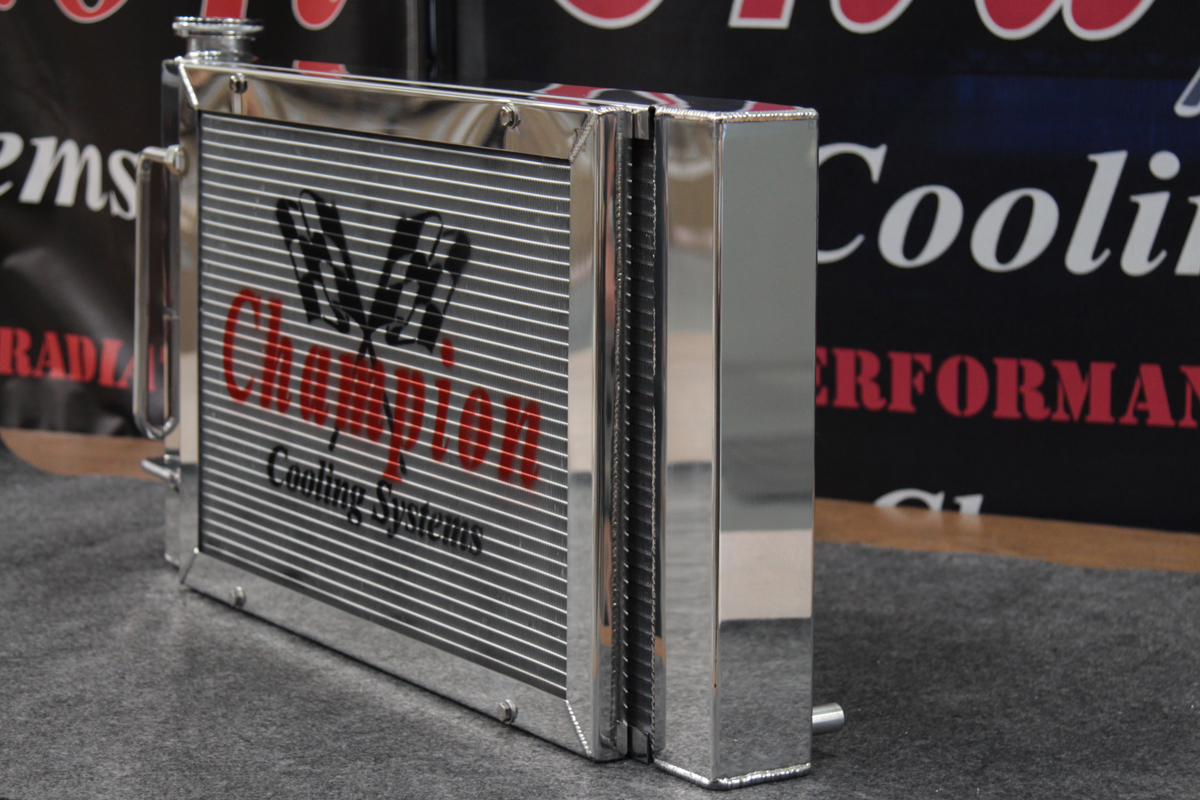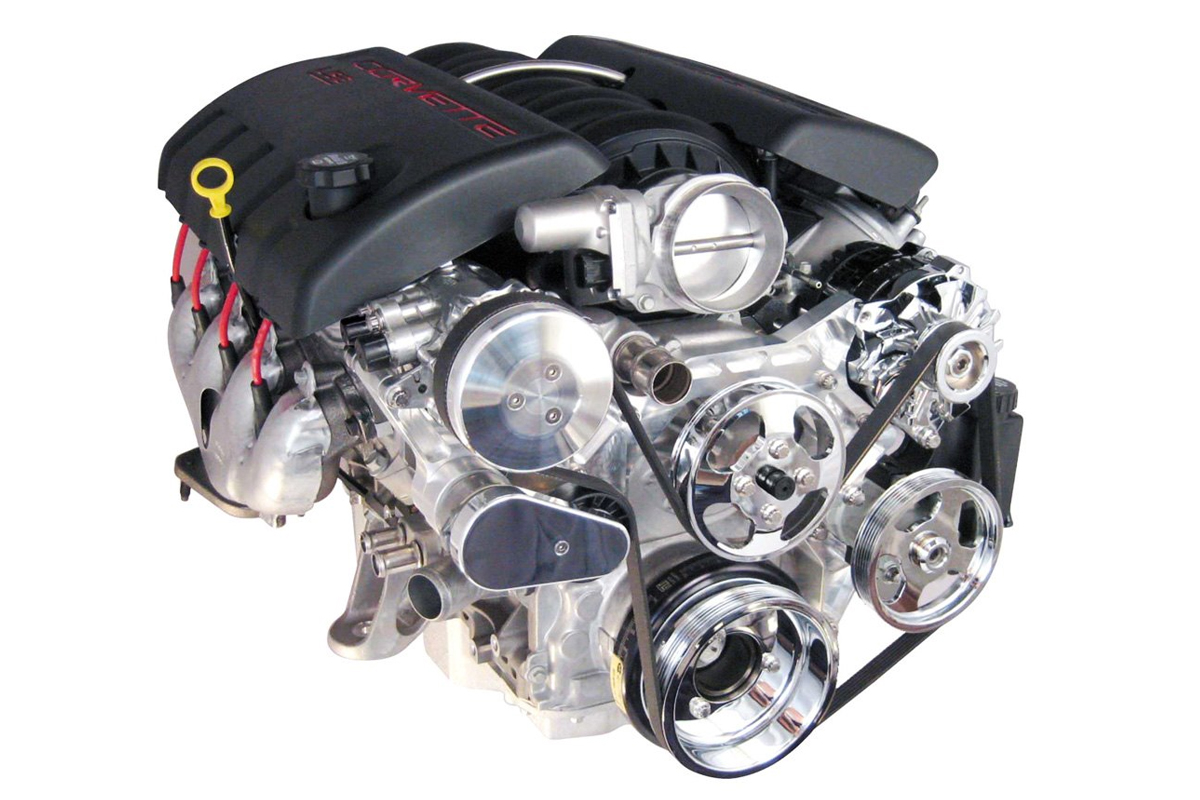People love driving their classic cars, but when that sun comes beating down it almost makes driving unbearable, especially in the Southwest. I don’t know how people survived three decades ago without air conditioning; thanks to companies like Vintage Air, adding a modern A/C system to a classic car is far easier than trying to track down old components that come without any guarantees.
Adding an A/C system can certainly make your old classic more comfortable during the hot summer months. We’ve seen aftermarket kits on just about everything, including street rods and muscle cars. If you’re thinking about adding air conditioning to your classic ride, or if you already have it and want to know more about it, you’ve come to the right place.
We reached out to our friend Rick Love, the Executive Vice President of Vintage Air, to get his expert advice on air condition for classics. Vintage Air has been at it since 1976, so you can say they know a few things about aftermarket air conditioning.
Rick suggests that the condenser should not be mounted directly to the radiator, but should be at least 1/8-inch away from the radiator. He stated, “The 1/8-inch air gap will prevent direct contact heat transfer, and insure that the air flows through both the condenser and radiator.” However, if the condenser needs to be mounted further from the radiator, he suggests using a shroud to fill the gap between the two components to help insure the airflow passes through the radiator without escaping around it.
Binary And Trinary Switches
On many aftermarket A/C systems, there is a switch connected in the system that allows the compressor to be switched on and off based on the line pressure. This binary or trinary switch can be mounted in the smaller pressure line itself, or it can be mounted on the receiver/drier. The video above will explain how the switches work, and how they should be connected.
As you might guess, the binary switch provides two functions, while the trinary switch provides three functions. Rick tells us, “A Binary switch provides low and high pressure compressor, and system, protections. The switch will disengage the compressor – or prevent the clutch from engaging – at a low pressure less than 30 PSI or low/lost refrigerant condition. It will also disengage the compressor if system pressure builds in excess of 408 PSI, which is usually a lack of sufficient airflow through the condenser.”
So the two functions of the binary switch are to determine high or low pressure and to protect the compressor. The trinary switch will serve the same two functions, and add a third function: to engage an electric fan once the pressure reaches 254 psi. The trinary switch can be wired to provide a ground or +12 volt signal for fan engagement, but Rick warns us, “The trinary switch signal should only be used to trigger an electric fan relay, or provide an input to the engine control ECU, and never to provide current directly to the fans.”
He suggests always using a trinary switch with electric fans, and tells us that a binary switch can be easily swapped out for a trinary switch as long as the binary switch is a female version that screws into a Schrader valve. He said, “If the switch is a male version that screws directly onto the receiver/drier, the refrigerant will need to be recovered before changing the switch, and then re-charged.”
Should There Be A Dedicated Condenser Fan?
We often get asked about adding an additional (pusher) fan to the condenser, switched on when the A/C is turned on. Rick stated that an auxiliary fan isn’t needed if you have an efficient electric fan package. “Puller fans are inherently more efficient than a pusher design, so the best solution is to have a good puller fan package,” he said.
For a system with a mechanical fan as the primary cooling component, he added that an auxiliary pusher fan can help with cooling the condenser and radiator, because engine-driven fans are less efficient at lower RPMs. A good mechanical fan is often sufficient to keep an engine at operating temperature. Remember: the main reason auto manufacturers started switching to electric fans is because they started turning the engines sideways for front-wheel drive vehicles, so a mechanical fan was eliminated on those engines. Mechanical fans are still used on many rear wheel drive cars and trucks today.
Another time when electric fans are used is when a front drive system is used, such as Vintage Air’s Front Runner system, which uses a serpentine belt system to drive all components. These systems typically won’t have a provision for using the mechanical fan, so a single or dual electric fan must be used. As with many of our applications, a shroud for the electric fans is available and should be used where applicable. We don’t typically recommend or offer a auxiliary (pusher) fan if your system is cooling properly.
If you do choose to add an auxiliary fan to assist with cooling, it’s not necessary to have that fan on at all times when the A/C is on. “There really isn’t any reason to run the fan when the vehicle is running down the highway,” Rick said. “Ram air will provide sufficient airflow if all proper ducts and inner fenders are in place.” When one is added, he recommends connecting an auxiliary fan in the same manner as a primary cooling fan: to be triggered with either temperature or pressure, and not full time.
For those who are using electric fans as a primary cooling component, he does recommend using a trinary switch to control the the fan(s). He said, “The fan control component of the trinary switch will be wired in parallel with the engine temperature switch so that either the engine temperature or A/C system pressure will engage the fan(s). This arrangement allows the vehicle to engage the fans when airflow is needed, either with engine temperature or the A/C pressure.”
As with any cooling system, a properly functioning system will provide the best cooling. If you have a problem with cooling, find out if it’s an air flow issue (not enough air being pulled through the radiator) or a coolant flow issue (failed pump or blockage). And if you’re considering installing an A/C system in your classic car or truck, be sure to contact the manufacturer and let them know what you’re putting it in and their sales team will make sure you get the right components for your vehicle.
Rick tells us, “We encourage customers to contact Vintage Air for any questions or concerns about their A/C system, or to purchase a new system. Our staff will be glad to help!”







